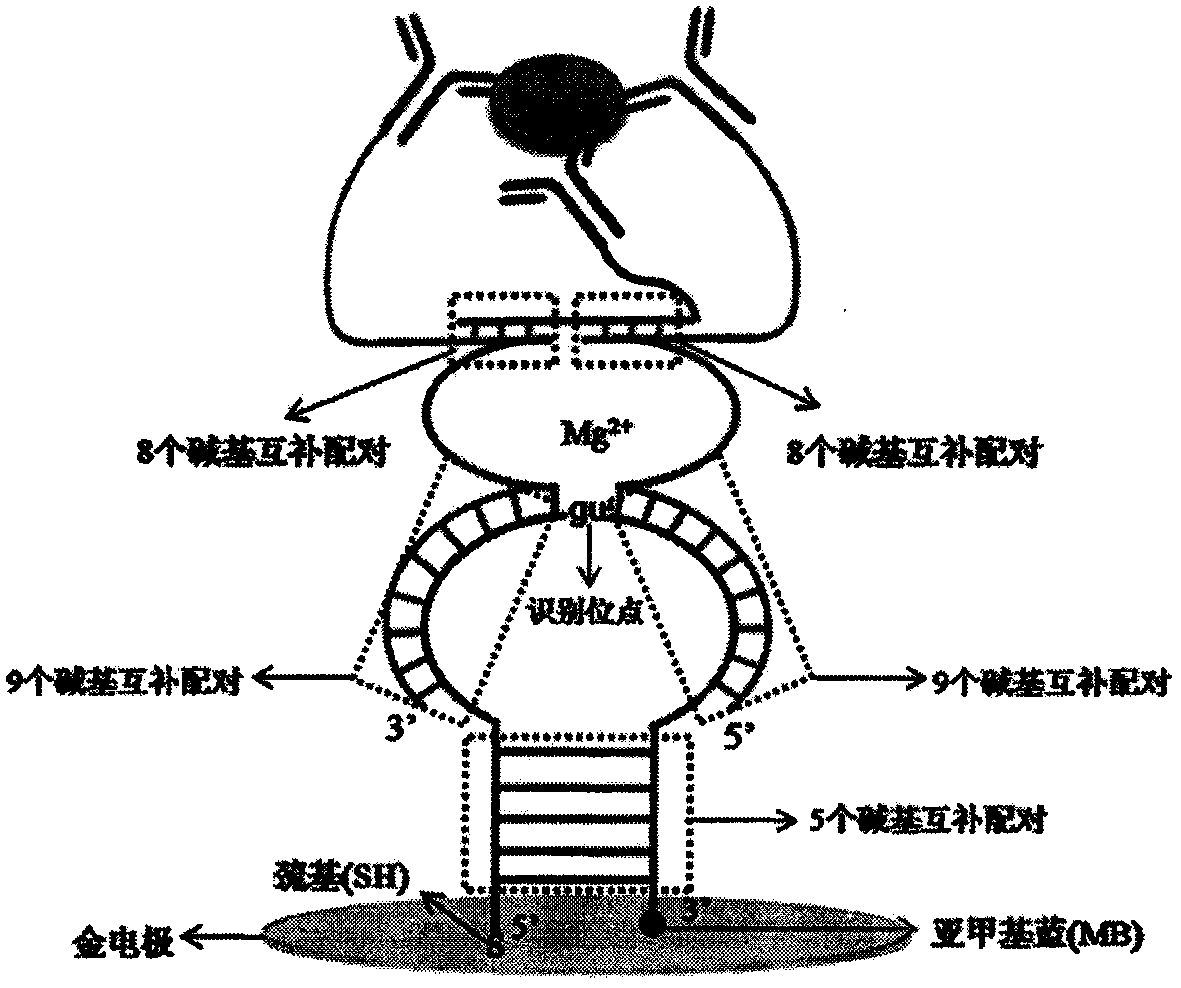Nuclease amplified high-sensitivity electrochemical immunoassay method
An analytical method and electrochemical technology, applied in the field of highly sensitive electrochemical immunoassay, can solve the problems of high cost and long time required, and achieve the effects of simple preparation, good versatility and improved sensitivity
- Summary
- Abstract
- Description
- Claims
- Application Information
AI Technical Summary
Problems solved by technology
Method used
Image
Examples
Embodiment 1
[0025] Embodiment 1: in combination with figure 1 , Preparation of highly sensitive and general-purpose nucleic acid electrochemical immunosensing interface
[0026] Grind and clean the gold electrode with a diameter of 2 mm, add 6 μL of 0.5 μM hairpin DNA labeled with sulfhydryl (SH) and methylene blue (MB) on the treated gold electrode dropwise, react at room temperature for 2 hours in the dark, and use 0.1 The electrodes were washed with 0.01M phosphate buffer solution of M NaCl and dried with nitrogen gas. Then, 6 μL of 1 mM mercaptohexanol was added dropwise on the surface of the electrode, reacted at room temperature for 40 minutes, washed with phosphate buffer solution and dried with nitrogen gas. The nucleic acid electrochemical immunosensing interface was prepared and stored at 4°C until use.
Embodiment 2
[0027] Embodiment 2: in combination with figure 1 , taking carcinoembryonic antigen (CEA) as an example to illustrate the application of this nuclease-amplified high-sensitivity electrochemical immunoassay method.
[0028] (1) Preparation of sample incubation solution: mix CEA standard solution (or sample solution containing CEA) and DNA1-antibody 1, DNA2-antibody 2, DNA3-antibody 3 in 30mM MgCl 2 0.01M phosphate buffer, in which the concentrations of DNA1-antibody 1, DNA2-antibody 2, and DNA3-antibody 3 were all 50 nM.
[0029] (2) Add 6 μL of sample incubation solution dropwise to the electrochemical immunosensing interface, incubate at room temperature for 40 minutes, and then rinse with washing solution.
[0030] (3) Insert the rinsed electrode into the detection electrolyte, use this electrode as the working electrode, the Ag / AgCl electrode as the reference electrode, and the platinum wire as the counter electrode, and perform differential pulse voltammetry in the potent...
PUM
 Login to View More
Login to View More Abstract
Description
Claims
Application Information
 Login to View More
Login to View More - R&D Engineer
- R&D Manager
- IP Professional
- Industry Leading Data Capabilities
- Powerful AI technology
- Patent DNA Extraction
Browse by: Latest US Patents, China's latest patents, Technical Efficacy Thesaurus, Application Domain, Technology Topic, Popular Technical Reports.
© 2024 PatSnap. All rights reserved.Legal|Privacy policy|Modern Slavery Act Transparency Statement|Sitemap|About US| Contact US: help@patsnap.com









